
 |

|
|
|
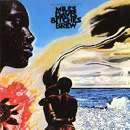 |
Bitches Brew(1969)Musicians: MILES DAVIS-trumpet; WAYNE SHORTER-soprano sax; LENNY WHITE-drums; BENNIE MAUPIN-bass clarinet; CHICK COREA-electric piano; JIM RILEY-percussion; JACK DEJOHNETTE-drums; HARVEY BROOKS-fender bass; CHARLES ALIAS-drums; DAVE HOLLAND-bass; JOHN MCLAUGHLIN-electric guitar; JOE ZAWINUL-electric piano; LARRY YOUNG-electric piano This is the album that started it all. Though it was by no means the first recording to attempt a jazz-rock merger, Bitches Brew became the catalyst for a movement that would raise jazz to unprecedented heights of popularity. The list of musicians that performed on this album reads like a Who's Who of future prominent jazz-rock artists. Recorded six months after In a Silent Way, the music of Bitches Brew refines and extends the incipient steps taken towards jazz-rock integration on the previous album. Comprised of extended, freely improvised pieces, the album is nevertheless made accessible by the use of popular electronic instruments and by a reliance on a rock rhythmic underpinning . |
|
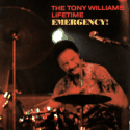 |
Emergency(1969)Musicians: TONY WILLIAMS-drums; JOHN MCLAUGHLIN-guitar; LARRY YOUNG-keyboards Tony Williams's Emergency was recorded three months before Bitches Brew and is in many ways a more satisfying statement. Charged by Tony Williams' aggressive drumming and John McLaughlin's Tal Farlow meets Jimi Hendrix approach to guitar playing, the music on the album approached a new level of jazz-rock synergy. The compositions on the album are more structured than those on Bitches Brew, but not to the extent of stifling group interplay. Of particular interest is the use of complex musical passages played in unison. The track "Spectrum" is a fine example of this type of playing. |
|
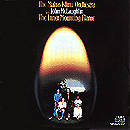 |
Inner Mounting Flame(1971)Musicians: JOHN MCLAUGHLIN-guitar; BILLY COBHAM-drums; RICH LAIRD-bass; JAN HAMMER-piano; JERRY GOODMAN-violin Guitarist John McLaughlin, who had served his musical apprenticeship with Tony Williams and Miles Davis, formed the Mahavishnu Orchestra in 1971 and soon afterwards released Inner Mounting Flame. The music on this album is a revolutionary synthesis of various musical styles united by the energy of rock and the improvisational freedom of jazz. Elements from the blues, country, Indian classical music, and European classical music are found in an ecletic mix of compositions that range in emotional expression from the drive of "The Noonward Race" to the tenderness of "A Lotus On Irish Streams." An important factor of the overall sound of the album is the use of electric instruments. In particular, the distorted timbres of McLaughlin's guitar, Jerry Goodman's violin, and Jan Hammer's piano as well as the use of effects such as the "wah wah" pedal, give the album much of its rock sensibility. A sensibility, however, that is augmented by an unprecedented level of instrumental virtuousity. Even today the drum introduction to "Vital Transformation", the guitar playing on "The Noonward Race" and the ensemble playing on "Awakening" strike the listener as feats requiring superhuman technique and endurance. The album is also notable for a variety of technical innovations. Among these are the use of Indian melodic and rhythmic phrasing, group improvisation, the use of non-standard time signatures, the superimposition of rhythmic "feels," and the tight integration of drum parts with musical passages. Some of these had been explored by past jazz artists but never fully developed. One especially interesting musical technique that was first explored on this album is the use of overlapping musical sections. |
|
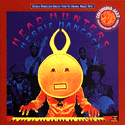 |
Headhunters(1973)Musicians: HERBIE HANCOCK-fender rhodes electric piano, hohner D 6 clavinet, arp ddysey synthesizer, arp soloist synthesizer, pipes; BENNIE MAUPIN-soprano and tenor saxophone, saxello, bass clarinet, alto flute; PAUL JACKSON-electric bass and marimbula; HARVY MASON-yamaha drums; BILL SUMMERS-congas, shekere, balafon, agogo, cabasa, hindewho, tambourine, log drum, surdo, gankoqui and beer bottle Herbie Hancock's Headhunters was both groundbreaking and immensely popular. A mixture of jazz, electronics, and Sly Stone influenced funk rhythms, Headhunters became the best selling jazz album in history. It was also one of the most influential albums of the 1970's and was responsible for the rise of a funk based sub-genre of jazz-rock. Most of the pieces on the album are based on hypnotically repeating rhythms that, along with the African and Latin based percussion playing of Bill Summers, lend the music an earthiness that was new to jazz of the period. Two of the pieces, "Chameleon" and "Watermelon Man" became jazz standards. Despite the fact that it was an instrumental, "Chameleon" also became a hit single. |
|
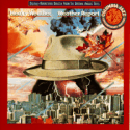 |
Heavy Weather(1976)Musicians: JOE ZAWINUL-rhodes piano, acoustic piano, arp 2600, oberheim polyphonic, guitar, tabla, melodica; WAYNE SHORTER-soprano and tenor saxophone; JACO PASTORIUS-electric bass, mandocello, vocal, drums, steel drums; ALEX ACUNA-drums, handclap; MANOLO BADRENA-congas, tambourine, vocal, percussion Heavy Weather was Weather Report's breakthrough album. The sound of their earlier albums was a blend of free jazz, psychedelic rock and Bitches Brew period Miles Davis. Abandoning the style of these earlier albums for an approach that utilized elements from older jazz traditions allowed Joe Zawinul and Wayne Shorter to find the band's true focus. Some of the important elements of this new approach were Joe Zawinul's organic synthesizer voicings, Jaco Pastorious' sinuous bass lines, and Alex Acuna's ethnically informed percussion work. All of these elements are in evidence on the album's signature track "Birdland" which is a joyous ode to the legendary jazz nightclub named after Charlie "Bird" Parker. |
|
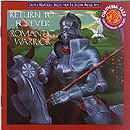 |
Romantic Warrior(1976)Musicians: CHICK COREA-acoustic piano, fender rhodes, honer clavinet, mini moog, moog 15, micro mini moog, arp odyssey, yamaha organ, polymoog, marimba, percussion; STANLEY CLARKE-alembic bass with instant flanger, piccolo bass, acoustic bass, bell tree, hand bells; LENNY WHITE-drums, timpani, congas, timbales, hand bells, snare drum, suspended cymbals, alarm clock; AL DIMEOLA-electric guitars, acoustic guitar, soprano guitar, hand bells, slide whistle Romantic Warrior was Chick Corea's sixth album with the group Return to Forever(RTF). It was the first RTF album in which the various musical influences Corea had been experimenting with started to gel. The music is an eclectic melding of musical elements that range from Latin and classical to jazz and rock. Especially interesting in this respect is the extended piece "Duel of the Jester and the Tyrant" in which elements from classical music, such as counterpoint, are used to good effect. The fact that the members of this particular incarnation of RTF were all extremely advanced technically on their instruments resulted in an exceptionally well balanced instrumental performance. The role of the bass guitar as a solo and melodic instument in the music is especially notable and was a reflection of the general trend towards musical liberation that jazz-rock helped to foster. |
|
 |
I.O.U.(1982)Musicians: ALLAN HOLDSWORTH-guitar, violin; PAUL WILLIAMS-vocals; PAUL CARMICHAEL-bass; GARY HUSBAND-drums I.O.U. was Allan Holdsworth's second album as a leader and was the first album that fully showcased his unique talents as a performer and composer. Thoughout the album, Holdsworth's fluid, saxophonelike guitar solos wind through harmonically dense chord progressions held together by the tight bass playing of Paul Carmichael and the complex, uninhibited drumming of Gary Husband. Highlights include the haunting guitar swells in the introduction to "Shallow Sea" and the Coltranesque "sheets of sound" guitar technique on "The Things You See When You Haven't Got Your Gun." Holdsworth's legato soloing technique and unique harmonic sensibility influenced many jazz and rock musicians. |